
power

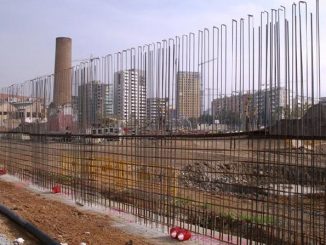
The discreet urbanism of the bourgeoisie
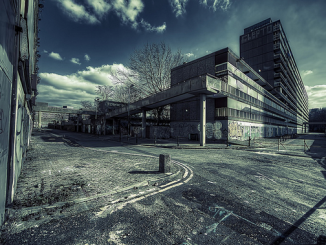
Heygate Was Home!

A dead city
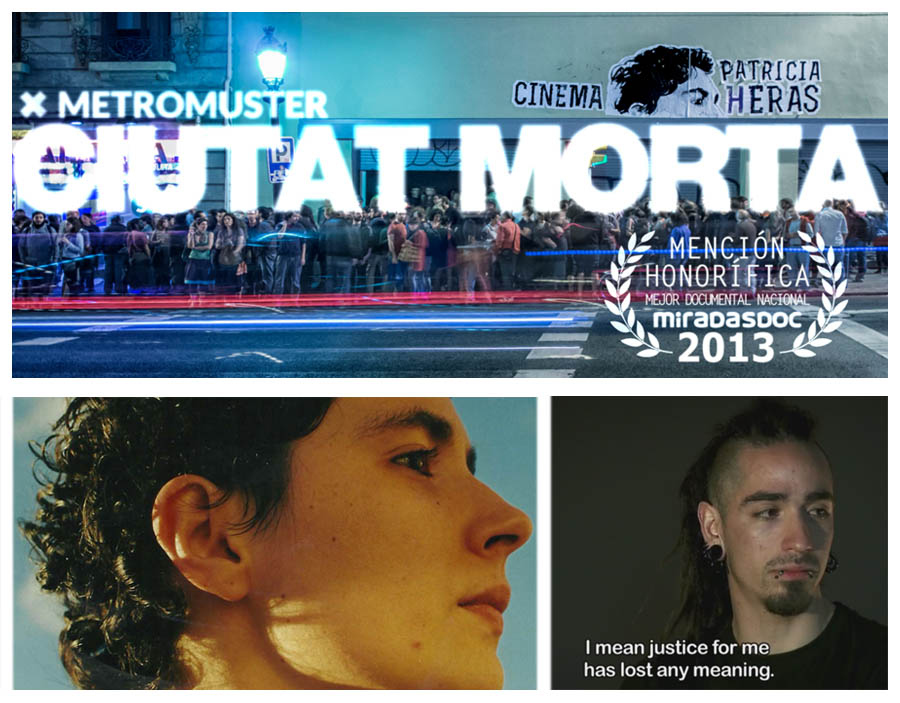 Like chinese boxes, this documentary not only brilliantly shows the institucional and political corruption behind the police-orchestrated hoax known as ‘4F’, which began on February 4th, 2006 in Barcelona’s calle Sant Pere Més Baix, but it also extends in a coil the understanding of horror to wider levels of society: from the police, to the judges, to the press, to social services, to the city council, to gentrification, in brief, to power in itself. Like before Joaquim Jordà’s De Nens (2003), now Ciutat Morta leads us from a particular history to the deep and terrifying comprehension of the general, of society, of the city. To the memory of Patricia Heras, the dead poet.
Like chinese boxes, this documentary not only brilliantly shows the institucional and political corruption behind the police-orchestrated hoax known as ‘4F’, which began on February 4th, 2006 in Barcelona’s calle Sant Pere Més Baix, but it also extends in a coil the understanding of horror to wider levels of society: from the police, to the judges, to the press, to social services, to the city council, to gentrification, in brief, to power in itself. Like before Joaquim Jordà’s De Nens (2003), now Ciutat Morta leads us from a particular history to the deep and terrifying comprehension of the general, of society, of the city. To the memory of Patricia Heras, the dead poet.
- “4F with names and surnames: a reflection on police, the judiciary, the press and the politicians, during the suffocating silence prior to the broadcasting of ‘Ciutat Morta’“, Jesus Rodríguez in La Directa, 21/1/2015
- “Something stinks in Barcelona“, Argelaga review, 27/1/2015
- Two petitions to sign: for the reopening of the case, and for the resignation of the Judge that seems to have written the verdict before holding the trial.
- Webpage of the movie. It is the same producer of No-res: vida y muerte de un espacio en tres actas, on the demolition of Barcelona’s Colònia Castells neighborhood.
- The mayor of Barcelona presents an award for the directors, but they do not take it: ¿how can they accept it from the same hands that have caused all this story?
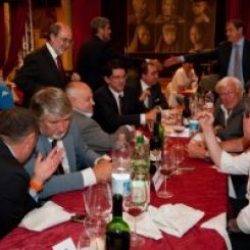
The fall of the Roman Empire

The control over space, and the spaces of control: XIII Conference of Geocrìtica
From may 5th to 10th, 2014, the International conference “El control del espacio y los espacios de control”, will be held in the University of Barcelona, organized by the review Geocrítica; with the linked reviews ScriptaNova and Biblio3w, this is one of the most important and interesting publication on urban issues in the whole spanish-speaking area. The conference is public and admission free of charge; we suggest these sessions, in which some members of our OACU group will be involved: may 6th, Ocupación del espacio y control de los individuos at 9am, Segregación social y urbana a at 6.30pm; may 9th, Organización económica, poder y control at 9am, Cambios en las formas de control at 4pm.
- Here is the programme of the conference, with the list of papers and tables; for more information, visit the webpage.
- Here are the Papers of the conference, and the num. 493 of Scripta Nova with all the selected interventions!

Where there be dragons: Multiple modernities in Kathmandu
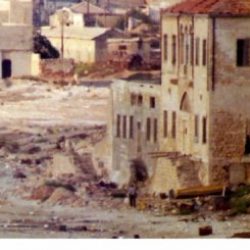
Wastelands: Weizman on military urbanism

Towards an anthropology of the good families
In our ethnographies they are often in the background, as in this photo taken by Jordi Secall in 2003 [see his blog]. But professor MCDONOGH proposed many years ago the study of the good families of Barcelona – the ‘catalan oasis’. Thursday, february 28th, 7pm at Reina de Àfrica (calle Bolivar 10, Vallcarca), debate “Towards an anthropology of catalan elites” with Gary W. McDonogh, organized by GTEEP – GRECS – OACU
- Download a chapter of McDONOGH’s The Good Families of Barcelona. A social history of power in industrial Barcelona, Princeton, 1986, in PDF (spanish) “De la família a la oligarquía” (courtesy: OACU friends!)
- Another brilliant contribution to the study of the elites: Longina JAKUBOWSKA (2012) The straw in the anthropologist’s boots: studying nobility in Poland
- Excellent reportage on how the influx of new global elites is changing the face of Europe on The Guardian webpage [march 2013]

“Re-cordar” Can Ricart: to pass it back through the heart
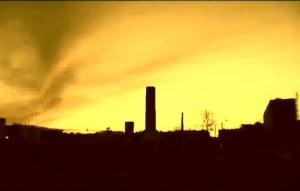 el desahucio
"bueno,
en primer lugar, te sientes echado, no querido, violentado. se rompe de pronto el universo ese repetitivo e invariable y, sin avisar, todo zozobra,
nada parece real.
incluso los cambios en el barrio,
los derribos,
no tienen ninguna connotación positiva, sólo resultaban amenazadores,
tristes.
trasladar una empresa es complicado.
es decir,
debería serlo, pq una empresa, por encima de todo,
la forman personas.
eso quiere decir q se trastorna –de pronto- toda la cosmogonía de tooodos los integrantes...
el desahucio
"bueno,
en primer lugar, te sientes echado, no querido, violentado. se rompe de pronto el universo ese repetitivo e invariable y, sin avisar, todo zozobra,
nada parece real.
incluso los cambios en el barrio,
los derribos,
no tienen ninguna connotación positiva, sólo resultaban amenazadores,
tristes.
trasladar una empresa es complicado.
es decir,
debería serlo, pq una empresa, por encima de todo,
la forman personas.
eso quiere decir q se trastorna –de pronto- toda la cosmogonía de tooodos los integrantes... 

Istanbul, a city without limits. Documentary movie
 "In Istanbul, we crossed the ecological limits, crossed the population limits, crossed the ecological limits. If you ask me where it is all going to lead, I will quote from Doğan Kuban: chaos" Mücella Yapıcı, chamber of architecture of Istanbul.
"In Istanbul, we crossed the ecological limits, crossed the population limits, crossed the ecological limits. If you ask me where it is all going to lead, I will quote from Doğan Kuban: chaos" Mücella Yapıcı, chamber of architecture of Istanbul.
- Ekümenopolis: Ucu Olmayan Şehir (Ecumenopolis: City Without Limits) (2011) a movie by Imre Azem, will be in Barcelona on november 15th, 8pm at Traslaciones festival in CCCB. Director Imre Azem will participate in the debate Istanbul relatos fuera de campo on wednesday 16th at 7:30pm. [Trailer1] [Trailer2] [Web]

The quality of life in Naples: between Pomigliano and Posillipo
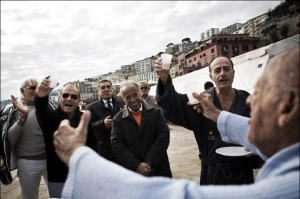 [/caption]
“An oasis of luxury in the capital of mafia" was the title chosen by a peruan newspaper in publishing this photo reportage about Naples' Circolo Posillipo. But in spite of many elements that might make us believe it, we can't pretend that Napols is just like a stereotype of a South American city, where the rich lock up in their golden bunkers, while in the streets the people shoot each other with guns. Partly because the members of Circolo Posillipo are not as rich as we could imagine; but mainly because Naples, as south american cities are, is a place far more complex than the unambiguous narrations we receive from the media, that now only see/sell the violent deaths, criminality, urbanistic and social chaos, while in the Nineties they only showed the monuments that were reopening, the dynamism of the new upper classes, and the rebirth of tourism. Even them the camorra controlled the neighborhoods, the peripheries were second-class places, the young people were beginning to assume crack and cocaine, hidden by the invisibility in which they were being kept. All these things, at that time, were not so fashionable as they are it now.
[/caption]
“An oasis of luxury in the capital of mafia" was the title chosen by a peruan newspaper in publishing this photo reportage about Naples' Circolo Posillipo. But in spite of many elements that might make us believe it, we can't pretend that Napols is just like a stereotype of a South American city, where the rich lock up in their golden bunkers, while in the streets the people shoot each other with guns. Partly because the members of Circolo Posillipo are not as rich as we could imagine; but mainly because Naples, as south american cities are, is a place far more complex than the unambiguous narrations we receive from the media, that now only see/sell the violent deaths, criminality, urbanistic and social chaos, while in the Nineties they only showed the monuments that were reopening, the dynamism of the new upper classes, and the rebirth of tourism. Even them the camorra controlled the neighborhoods, the peripheries were second-class places, the young people were beginning to assume crack and cocaine, hidden by the invisibility in which they were being kept. All these things, at that time, were not so fashionable as they are it now. 
More on Barcelona’s city center: “The Melody of Raval”, by Manuel Vázquez Montalbán
 "Here we were all born in leftover neighborhoods, rounded by leftovers, waiting to grow up, to get old, or better said, to deconstruct ourselves; so we can receive all your sociologists, all your social psychologists, your substitute mayor, your worst dressed politician, the sons of your good neighborhoods that will give us examples on how to use abilities and efforts to help us out of the leftover neighborhoods; this is, you give us your leftover social science, your leftover psychology, your leftover mayor, your leftover solidarity, even your leftover fear, for sometimes you think that you yourselves could have been born in the leftover neighborhoods, that you could be leftovers yourselves; this is why you come down here to look at us playing the part of the assisted classes, useless even for production because robotics replaced us, and because our condition of leftovers can't compete anymore with leftovers from even more impoverished parts of the planet.
"Here we were all born in leftover neighborhoods, rounded by leftovers, waiting to grow up, to get old, or better said, to deconstruct ourselves; so we can receive all your sociologists, all your social psychologists, your substitute mayor, your worst dressed politician, the sons of your good neighborhoods that will give us examples on how to use abilities and efforts to help us out of the leftover neighborhoods; this is, you give us your leftover social science, your leftover psychology, your leftover mayor, your leftover solidarity, even your leftover fear, for sometimes you think that you yourselves could have been born in the leftover neighborhoods, that you could be leftovers yourselves; this is why you come down here to look at us playing the part of the assisted classes, useless even for production because robotics replaced us, and because our condition of leftovers can't compete anymore with leftovers from even more impoverished parts of the planet. 
History and its distortions in the center of Barcelona
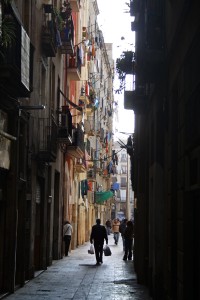 To understand the recent urban and social transformations in Barcelona's Barrio Chino, historical center of the town (that now, after gentrification and demolitions, we have to call "Raval") often the attention goes towards the subproletarians living and smuggling in the neighborhood: "an underworld of immoral behaviour" (1943). But it would be more useful to study another kind of commerces, much darker and of greater scale, than those of the underworld. The catalan bourgeoisie had been trying to transform and demolish Barcelona's city center during more than a century: this project had to wait during the dictatorship, but in the eighties the old dream came back to life. "These 200 families that had been holding power during 150 years, invested in purchasing blocks of flats in central Barcelona, so they would make lots of money when these neighborhoods would have been demolished and rebuilt". Read Adolf Castaños' Memory and its distortions (inedited, 2010) in English (pending revision). (original Spanish)
To understand the recent urban and social transformations in Barcelona's Barrio Chino, historical center of the town (that now, after gentrification and demolitions, we have to call "Raval") often the attention goes towards the subproletarians living and smuggling in the neighborhood: "an underworld of immoral behaviour" (1943). But it would be more useful to study another kind of commerces, much darker and of greater scale, than those of the underworld. The catalan bourgeoisie had been trying to transform and demolish Barcelona's city center during more than a century: this project had to wait during the dictatorship, but in the eighties the old dream came back to life. "These 200 families that had been holding power during 150 years, invested in purchasing blocks of flats in central Barcelona, so they would make lots of money when these neighborhoods would have been demolished and rebuilt". Read Adolf Castaños' Memory and its distortions (inedited, 2010) in English (pending revision). (original Spanish)
- Photos (2008-2009) of neighbors under eviction in Calle Robadors. [Album1][Album2]
- Manuel Vázquez Montalbán "The ethnical cleansing of the high classes" in El País, 14/9/1993
- "1988-1991 Crisis of heroin and beginnings of the urbanistic war in the historical center" in Masala, november-december 2009.